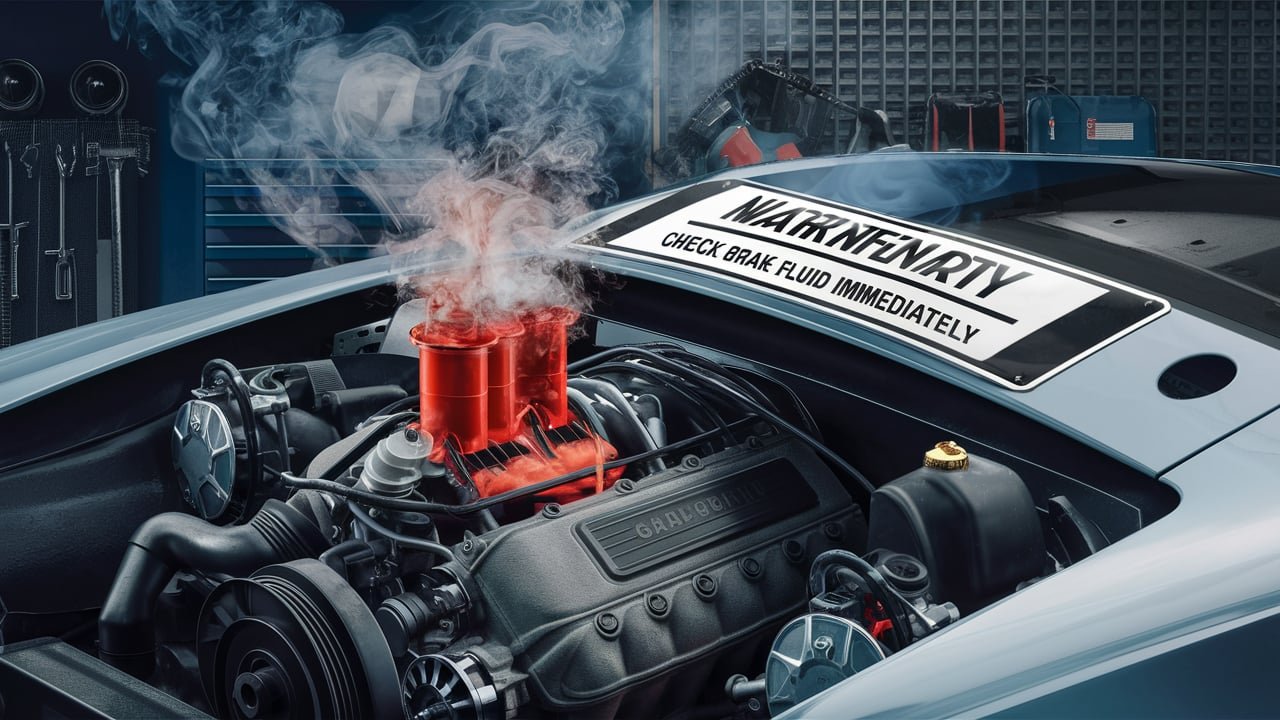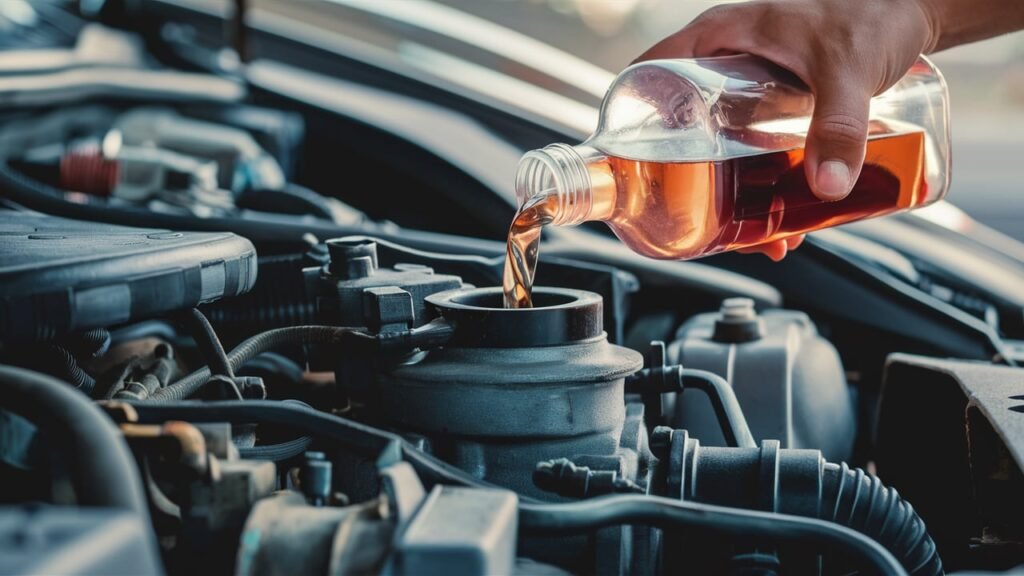
Essential Steps for Monitoring Car Engine Brake Fluid Level
In the realm of automotive maintenance, the vigilance of car engine brake fluid level monitoring stands as a cornerstone of safety and performance. The systematic tracking and regulation of this critical component encapsulate not only a mere observance but a meticulous undertaking vital for ensuring the proper functioning of an automobile’s braking system.
By precision-engineering our focus onto this aspect, we delve into a realm where attention to detail translates directly into optimized vehicular operation.
Understanding the gravity that hangs on each drop within the hydraulic veins of a car’s brake system brings forth the realization that monitoring brake fluid levels transcends beyond caution: it metamorphoses into necessity.
Undoubtedly, every mechanic, automotive technician, and car enthusiast bears witness to the pivotal role played by this viscous liquid as it transmits essential force from pedal to pad.
Through unwavering surveillance punctuated with calculated actions, these individuals engage in a routine that can spell out not only impeccable maintenance but also safeguard against potential malfunctions threatening road safety.
Welcome aboard as we unravel the significance encapsulated in these 6 Essential Steps for Monitoring Car Engine Brake Fluid Level – where accuracy reigns supreme, turning ordinary inspection into a profound exercise in vehicular well-being.
Understanding Brake Fluid.
Brake fluid serves as a crucial component in any vehicle’s braking system, ensuring reliable transfer of force from the brake pedal to the wheels. Its primary role is to transmit hydraulic pressure created by depressing the brake pedal to engage the brakes and slow or stop the vehicle.
This process is essential for maintaining control and safety while driving. Typically, brake fluid is a non-compressible substance that operates efficiently even under extreme temperature conditions.
In vehicles, there are several types of brake fluids available, with the most common ones being DOT 3, DOT 4, and DOT 5. Each type has distinct characteristics in terms of boiling points, viscosity, and compatibility with different braking systems.

For instance, DOT 3 fluid is commonly used in everyday vehicles due to its affordability and wide availability. On the other hand, high-performance vehicles might require DOT 4 or even DOT 5 fluid for enhanced heat resistance and performance capabilities.
It is imperative to maintain both the correct type and level of brake fluid in a vehicle to ensure optimal braking performance. Using the wrong type of brake fluid can lead to reduced efficiency, increased wear on braking components, and even potential safety hazards.
Regularly checking and replacing old or contaminated brake fluid according to manufacturer recommendations can significantly extend the lifespan of braking system components and enhance overall driving safety.
Proper maintenance of brake fluid underscores its critical role in preserving a vehicle’s functionality and ensuring smooth operations on the road.
Signs of Low Brake Fluid Level.
Detecting low brake fluid levels is crucial to ensure the safety and optimal performance of a vehicle’s braking system. Several symptoms can indicate that the brake fluid level in the car’s engine might be low.
One common sign is a soft or spongy brake pedal when depressed, which could imply air in the brake lines due to insufficient fluid.
Another indicator is an illuminated brake warning light on the dashboard, signaling a potential issue with the brake system that requires attention. In severe cases, grinding or squealing noises while applying brakes can signify metal-to-metal contact due to decreased fluid levels impacting proper lubrication.
The consequences of driving with insufficient brake fluid can be dire and compromise the ability to stop the vehicle safely. Low brake fluid affects hydraulic pressure within the braking system, leading to decreased stopping power and longer braking distances.

In extreme situations, complete loss of braking capability could occur, risking accidents or collisions. Therefore, prompt action upon identifying signs of low brake fluid is essential in maintaining both driver safety and overall vehicle condition.
Visually inspecting the brake fluid reservoir regularly is a simple yet effective method to monitor for signs of low levels. The translucent reservoir located under the hood allows easy visibility of the fluid level against minimum and maximum markings.
Any deviation from the recommended level should prompt immediate investigation to prevent adverse effects on braking performance. This visual inspection should become part of routine maintenance checks to catch potential issues early before they escalate into significant problems on the road.
Checking Brake Fluid Level.
To ensure the smooth operation of a vehicle’s braking system, it is crucial to regularly monitor the brake fluid level. Here is a step-by-step guide on how to accurately check the brake fluid level in your car’s engine.
Begin by locating the brake fluid reservoir under the hood of your vehicle. The reservoir is usually a translucent plastic or glass container situated near the back of the engine compartment, labeled with “MIN” and “MAX” markings.
Next, clean the top of the reservoir carefully to prevent contaminants from entering when you open it. Unscrew or unclip the cap covering the reservoir and inspect the level of brake fluid inside.
Ensure that the level falls between the “MIN” and “MAX” markers; if it is below “MIN,” this indicates a low brake fluid level and must be addressed promptly.

The tools required for checking the brake fluid level are simple: a cloth for cleaning, a flashlight for better visibility if needed, and possibly a funnel if topping up is necessary.
Regularly performing this check as part of routine maintenance can prevent potential brake issues caused by inadequate lubrication or leaks in the system, ensuring optimal safety on the road.
By incorporating this step into your regular vehicle care regimen, you can catch any deviations early and address them before they escalate into more severe problems.
Refilling Brake Fluid.
When the brake fluid in a car’s engine falls below the recommended level, prompt action is crucial to maintain optimal braking performance and safety. To refill the brake fluid correctly, first identify the reservoir location under the hood.
It’s typically transparent or labeled, making it easier to monitor fluid levels. Before opening the reservoir cap, ensure a clean environment free from dirt or debris to prevent contamination of the brake system. Use a lint-free cloth to wipe around the cap area and prevent any foreign particles from entering.
The type of brake fluid required for refilling depends on your vehicle’s specifications outlined in the owner’s manual. Common types include DOT 3, DOT 4, and DOT 5 brake fluids, each with distinct compositions suited for different automotive systems.
Selecting the correct type is crucial for maintaining compatibility and ensuring efficient performance. For example, using DOT 5 silicone-based brake fluid in a system designed for glycol-based fluids can lead to seal damage and compromise braking effectiveness.
During the refilling process, observe safety precautions to prevent spills or exposure to skin or paint surfaces. Wear gloves to protect your hands from potential chemical contact with brake fluid as it can be corrosive.
Additionally, utilize a funnel specifically designated for brake fluid replenishment to minimize spillage and avoid damaging surrounding components due to accidental spills. Remember that disposing of old brake fluid must be done responsibly following local regulations as it is considered hazardous waste.
Adhering to these instructions will safeguard your vehicle’s braking system integrity while promoting safe driving conditions for yourself and others on the road.
Properly refilling brake fluid not only enhances braking efficiency but also contributes significantly toward extending the lifespan of critical components within your car’s braking mechanism.
By following these essential steps diligently, you ensure that your vehicle maintains optimal performance levels without compromising on safety standards.
Bleeding Brake System.
Bleeding the brake system is a critical procedure that ensures the efficient operation of your vehicle’s brakes. This process becomes necessary after adding new brake fluid or conducting maintenance activities that may introduce air into the system.
The importance of bleeding the brakes lies in removing any air pockets or bubbles that could compromise brake performance and safety. Air bubbles can lead to a spongy brake pedal feel, reduced braking power, and potentially dangerous situations on the road.
To effectively bleed the brake system, you will need a few essential tools including a clear plastic tube, a wrench or socket to loosen bleeder screws, and fresh brake fluid.
The clear plastic tube facilitates the collection of old fluid and air from the bleeder screw without introducing more air into the system during the bleeding process.
It is crucial to use compatible tools and follow manufacturer recommendations to prevent damage to brake components and ensure proper bleeding.

Ensuring that all air bubbles are removed from the braking system during bleeding is imperative for optimal brake function. A helpful tip is to start with the wheel farthest from the master cylinder and work your way towards it, typically following a sequence provided in your vehicle manual.
This method helps evacuate trapped air efficiently. To expel any remaining bubbles successfully, maintain steady pressure on the brake pedal while opening and closing the bleeder screw until only clean fluid flows through the tube without any sputtering or interruptions.
Properly bleeding your car’s brakes is a fundamental maintenance task that guarantees safe driving conditions by restoring optimal braking performance.
By understanding why this process is necessary, having access to the right tools, and employing effective techniques to remove air bubbles, you can uphold the integrity of your vehicle’s braking system.
Always consult your vehicle manual or seek professional assistance if you are unsure about performing this procedure yourself.
Periodic Maintenance Schedule.
Regular upkeep of the brake fluid in a car’s engine system is paramount for ensuring optimal performance and safety on the road. It is recommended to check and maintain the brake fluid level every 12,000 miles or at least once a year.
However, it’s crucial to consult the vehicle owner’s manual for specific recommendations tailored to individual make and model requirements.
By incorporating this task into routine maintenance schedules, automotive technicians and car enthusiasts can proactively prevent potential brake system failures due to low brake fluid levels.
Integrating the checking of brake fluid into regular vehicle servicing routines is key to maintaining a reliable braking system. For instance, during oil changes or tire rotations, it is opportune to inspect the brake fluid reservoir visually for any signs of discoloration or low levels.

This proactive approach ensures that any adjustments required can be promptly addressed before they escalate into more serious issues impacting vehicle performance or safety.
Seasonal changes can influence the behavior of brake fluids within a car’s engine system. Fluctuations in temperature can affect the viscosity and performance of brake fluids. In areas with extreme climate conditions, such as very hot summers or cold winters, checking the brake fluid more frequently might be warranted.
Moreover, conducting thorough inspections during seasonal maintenance can preemptively address any variations caused by temperature changes, thereby optimizing the functionality of the braking system throughout the year.
By understanding these dynamics and consistently monitoring and adjusting based on seasonal shifts, mechanics and car enthusiasts can ensure their vehicles operate reliably under varying environmental conditions.
Conclusion.
In conclusion, understanding the crucial role of brake fluid in a vehicle’s braking system is paramount for ensuring both performance and safety on the road.
This comprehensive guide has outlined the essential steps for monitoring car engine brake fluid levels, from recognizing signs of low fluid to checking, refilling, and even bleeding the system as part of routine maintenance.
By adhering to these practices diligently, mechanics, automotive technicians, and car enthusiasts can uphold optimal brake function and prevent potential hazards associated with inadequate or contaminated brake fluid levels.
Regularly monitoring and maintaining the appropriate brake fluid levels not only safeguards against mechanical failures but also contributes to overall vehicular reliability.
Integrating these steps into periodic maintenance schedules can significantly extend the lifespan of a vehicle’s braking system, ultimately enhancing driver confidence and road safety.
Embracing a proactive approach to brake fluid management ensures that vehicles operate at peak efficiency while minimizing risks associated with neglecting this critical aspect of automotive care.




